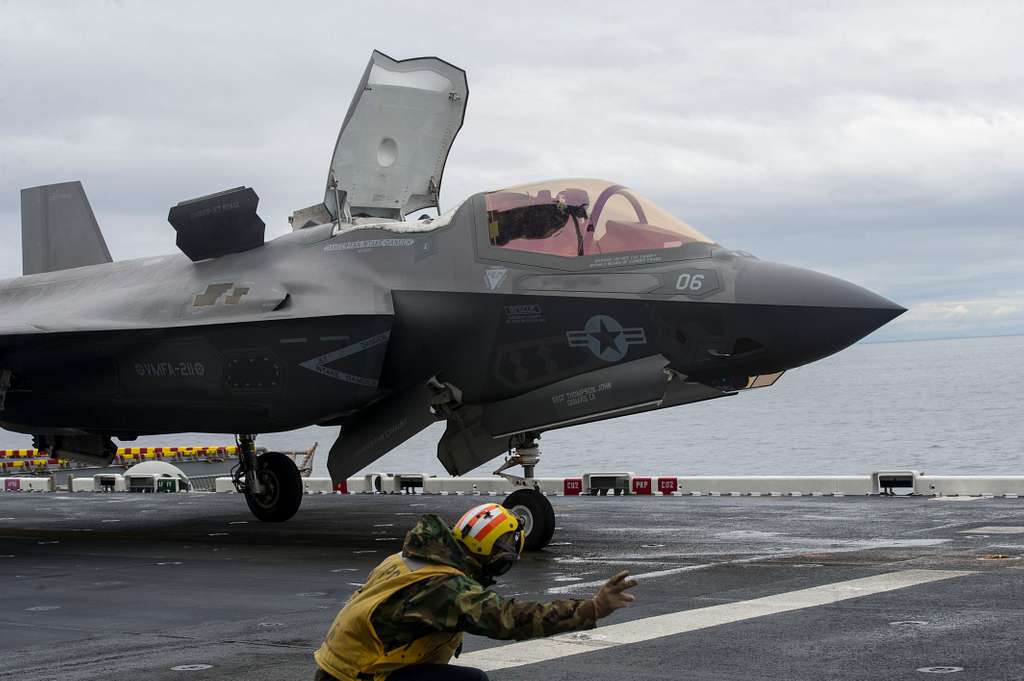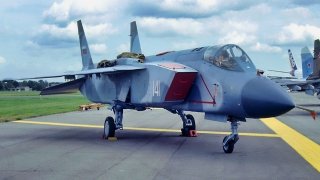Yak-41: The Mystery Russian Fighter Some Say Helped Make the F-35B
The Yak-41 (Yak-141) was a Soviet attempt at creating a supersonic VTOL (vertical takeoff and landing) aircraft, developed in the 1980s but ultimately shelved after the Soviet Union collapsed. Despite rumors, there is little evidence to suggest that the Yak-41 directly influenced the development of the F-35B, the VTOL variant of the U.S. military's Joint Strike Fighter.
Summary and Key Points: The Yak-41 (Yak-141) was a Soviet attempt at creating a supersonic VTOL (vertical takeoff and landing) aircraft, developed in the 1980s but ultimately shelved after the Soviet Union collapsed. Despite rumors, there is little evidence to suggest that the Yak-41 directly influenced the development of the F-35B, the VTOL variant of the U.S. military's Joint Strike Fighter.
-While Lockheed Martin did partner with Yakovlev in the early 1990s, the connection is more likely coincidental than foundational.
-The Yak-41 remains a footnote in aviation history, while the F-35B is a significant leap in modern military aviation.
Did the F-35B Benefit From the Soviet Yak-141?
Some rumors/conspiracy theories die hard – Walt Disney isn't preserved at his theme park, and NASA didn't fake the moon landing (nor is the earth flat), but try convincing those who believe such wild stories. This is also true in the world of military hardware.
It is a KNOWN FACT that Chinese hackers stole U.S. military technology, including details about Lockheed Martin's F-22 Raptor and F-35 Lightning II stealth fighters, and Beijing likely used the knowledge in the development of its Chengdu J-20 "Mighty Dragon" multirole fighter.
However, there remains just a rumor – and not a believable one at that – of how a largely forgotten Soviet aircraft contributed to the development of the F-35B – the vertical/short takeoff and landing (VSTOL) variant of the Joint Strike Fighter.
This would be the Yak-41 (aka Yak-141), an aircraft that is really little more than a footnote today, and for good reason. It never really moved past the early prototype stage.
The Yak-38 is the Starting Point
To understand anything about the Yak-41/Yak-141 requires a bit of explanation about the YAK-38, the Soviet's attempt to develop a fixed-wing aircraft that could take off and land vertically.
Since the Second World War, military planners have considered the advantages of VSTOL aircraft, which could take off and land vertically or on short runways, and the British military led the effort with the development of the AV-8B Harrier from lessons learned in the Korean War. By the late 1960s, it emerged as the only truly successful VSTOL design of the Cold War era.
The Soviets weren't deterred and moved forward with its own aircraft.
The A.S. Yakovlev Design Bureau JSC was charged with developing a Soviet VSTOL, yet whereas the Harrier had begun essentially as a clean slate, the Yak-38 was developed from the land-based experimental demonstrator Yakovlev Yak-36. In the end, the two shared little in common – yet, it is evident that the Soviets were forced to make numerous compromises.
The redesigned Yak-38 was outfitted with a pair of R-27 turbojets with intakes squashed together in an open nose, with the rear nozzles capable of rotating to provide vectored thrust. Compressed air thrusters on the tail, on the tips of its undersized wings, and at the end of its unicorn-like nose boom provided directional maneuvering.
In total, it took five years of testing to get the Yak-38 to the point where it could transition between vertical liftoff and horizontal flight. The two dedicated lift jets behind the cockpit in addition to a single RD-27 vector thrust engine resulted in higher fuel consumption, limiting range to around two hundred miles at best, and less if it performed a vertical takeoff.
Though some 230 were produced, its service history was underwhelming – and it was considered a difficult aircraft to control.
The Yak-41 Was Born
Despite the lack of success with the Yak-38, the Soviets pressed on with the Yak-41 (NATO reporting name "Freestyle"), which was developed in the 1980s. According to Army Recognition, the Yak-41 was "the pinnacle of the Yakovlev Design Bureau's VTOL aircraft development" becoming "the world's first supersonic VTOL aircraft, achieving speeds up to Mach 1.7," and was developed for use on the "Soviet Navy's Kiev-class carriers."
It was designed around a tri-engine configuration that included its main RD-41 after-burning turbofan engine, with a pair of RD-38 lift engines that provided the transition between vertical and horizontal flight. In addition to its advanced engine, the Yak-41 was outfitted with multi-tracking radar that could engage multiple targets, while its armament was to have consisted of a variety of ordnance including air-to-air missiles, guided bombs, and an internal cannon.

The aircraft took its maiden flight on March 9, 1987, and it soon set around a dozen world records. It was arguably leaps and bounds more advanced than the Yak-38, and may have even been comparable in capabilities to the Harrier. It might have been just the aircraft the Soviet Navy needed for its aircraft cruisers.
That is until one of the two prototypes was lost in an accident while landing on the aircraft cruiser Admiral Groshev in September 1991. That put the program on hold.
Then the Soviet Union broke up just months later, and in the years that followed Russia was in no position to move forward with the aircraft.
The F-35 Connection
So was the F-35B actually based on Soviet technology? That probably depends on who you ask and what you want to believe. With the end of the Cold War, and the dissolution of the Soviet Union, Yakovlev entered into a partnership with that little American firm known as Lockheed Martin.
As a Task & Purpose report from April 2018 outlined, "The two companies allegedly signed an agreement in 1991 (but not revealed until 1995) that outlined funding for additional Yak-141 prototypes, including a plan to fly the remaining operational prototype the Farnborough Airshow in September 1992."
Perhaps Lockheed Martin garnered some insight from the Yak-41, but the Soviet-designed aircraft was hardly a success at that point. Yet, the rumors continue to circulate to the contrary. Some of it may be Russian propaganda efforts – not that Russians would ever engage in such activities. But some of it may just be from aviation buffs who can't see that similar aircraft can be developed independently.
Finally, interest was renewed in the largely forgotten Yak-41/Yak-141 until last year, when it was announced the Soviet aircraft would be introduced in the popular online multiplayer game War Thunder – the same title that has earned notoriety for its fans constantly leaking classified secrets on gaming forums. That has only further served to reignite the rumor that the F-35 was based on Soviet tech.
Author Experience and Expertise: Peter Suciu
Peter Suciu is a Michigan-based writer. He has contributed to more than four dozen magazines, newspapers, and websites with over 3,200 published pieces over a twenty-year career in journalism. He regularly writes about military hardware, firearms history, cybersecurity, politics, and international affairs. Peter is also a Contributing Writer for Forbes and Clearance Jobs. You can follow him on Twitter: @PeterSuciu. You can email the author: [email protected].


